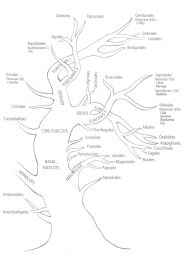The tea plantation on Monte Verità in the middle of January 2010
*In the insubric region, the tea cultivation zone exceptionally crosses 46° N (Locarno). This is due to the unique climatic situation along the lakes linking South Switzerland to Northern Italy: Firstly, the Alps protect against the cold north winds; secondly, the lakes balance the temperatures and act during wintertime as thermal pools; thirdly, the lake-valleys open out to the south preventing the formation of a cold reservoir by draining the cold into the Padan Plain. A detailed analysis of the factors pointing to a potential tea cultivation in the insubric climate of Ticino has been made by Paul A. DuPasquier in his PhD thesis in 1908.....
In 2000 we have triggered China tea planting in two locations in the Ticino, namely near Agarone situated on the south-facing slope above the the Piano di Magadino near Locarno, and in Davesco-Soragno on the southern slope near Lugano and its lake. The plants performed well, better in the region of Locarno than Lugano. In the latter place, deers preferred to forage on the tea plant. Perhaps, afterwards they were cavorting like the goats of the Ethiopian herdsman Kaldi, which fed on the coffee tree fruits.
100 years after DuPasquier's vision, Peter Oppliger has established on the Monte Verità the first Swiss tea plantation producing a noticeable harvest of Green Tea.

Tea plucking on a hill in Sri Lanka covered with Camellia sinensis var. assamica
A tea plantation in Japan consisting of Camellia sinensis var. sinensis



cha & pu er cha
This photograph shows the tip of a tea plant, Camellia sinensis var. sinensis (L.) Kuntze reflecting "two leaves and a bud" as a good quality criterion for the harvest.
Camellia sinensis has its origin in China and possibly also in the entire Asian Monsoon region. It was introduced in many parts of the world which meet the climatic needs of the plant. In the northern hemisphere tea is cultivated up to the 38° latitude – by the exception of plantations near the Black Sea, which distinctly surpass 40° N.* Vegetative buds and young leaves of Camellia sinensis var. sinensis [茶 cha] and C. sinensis var. assamica (J. W. Masters) Kitamura [普洱茶 pu er cha] are manufactured into green and black tea, respectively. The former species has small leaves and tolerates lower temperatures, whereas the latter has larger leaves and is adapted to warm climates. Thus, there is a long history of the use and cultivation of tea in China. Tea is usually distinguished by the Chinese people as small leaf tea (var. sinensis) with a more northern distribution and large leaf tea (var. assamica) with a more southern distribution. However, the other varieties of C. sinensis and even some other species of Camellia are locally used as tea. The distinction between green tea and black tea concerns the processing of the leaves whether they are just wilted before drying (green tea) or wilted and then fermented before drying (black tea).
Because of extensive cultivation, it is often difficult to know for certain whether specific collections of var. sinensis and var. assamica are wild, cultivated, or escaped. For this reason, the actual wild distribution of these two varieties is uncertain.
The 'Caffeines'
The
Caffeine Plants


